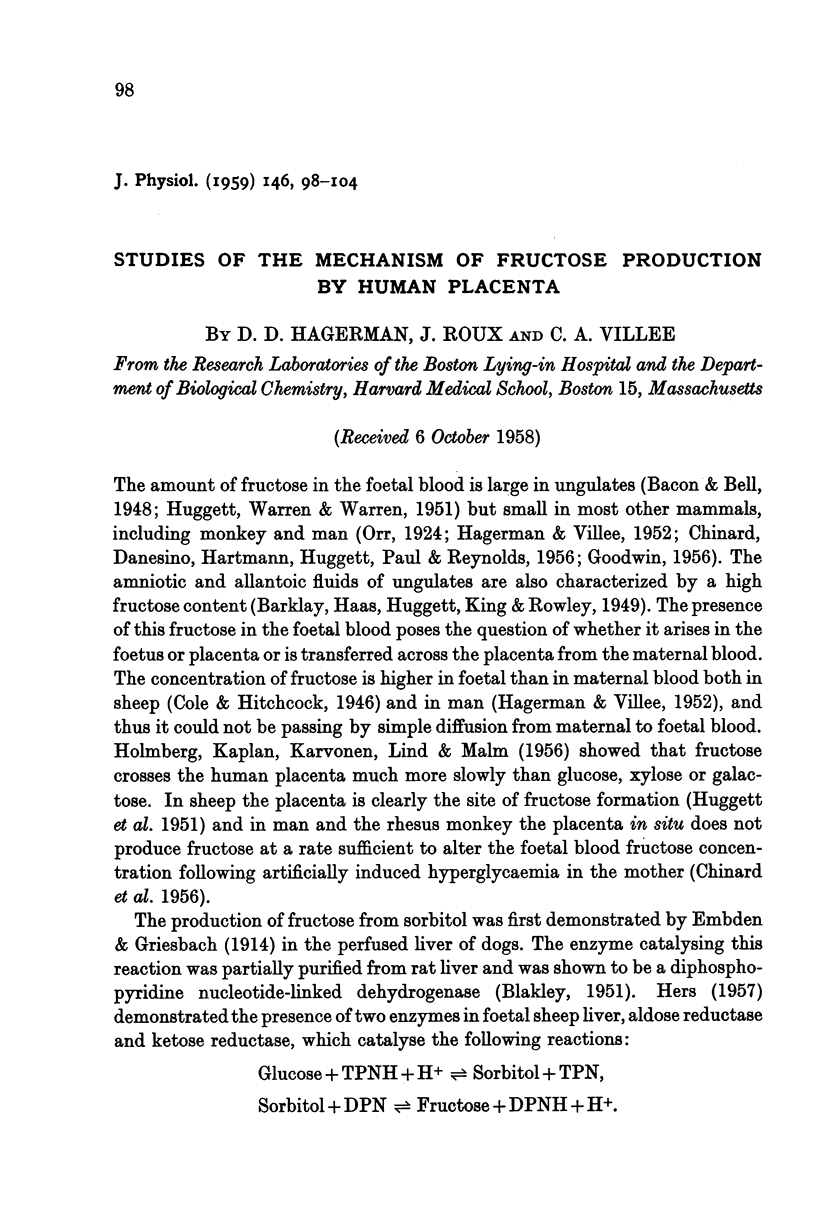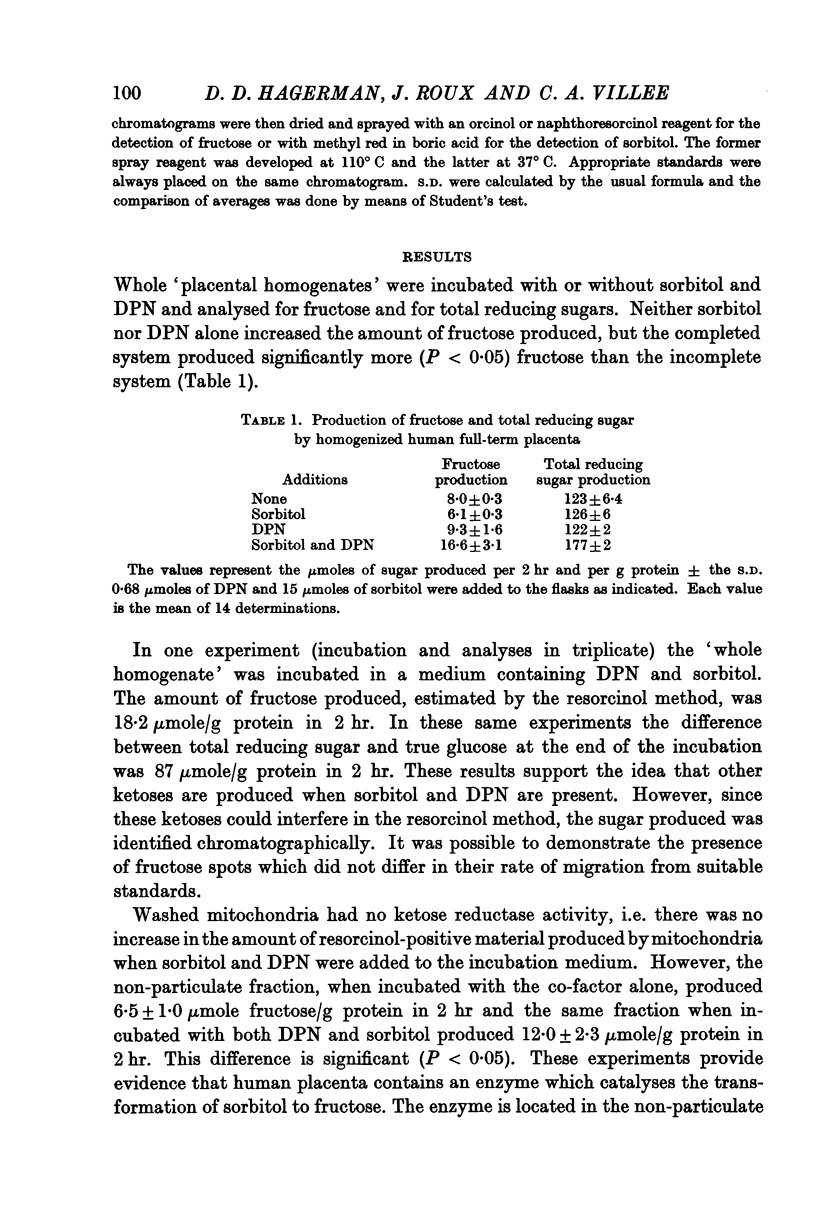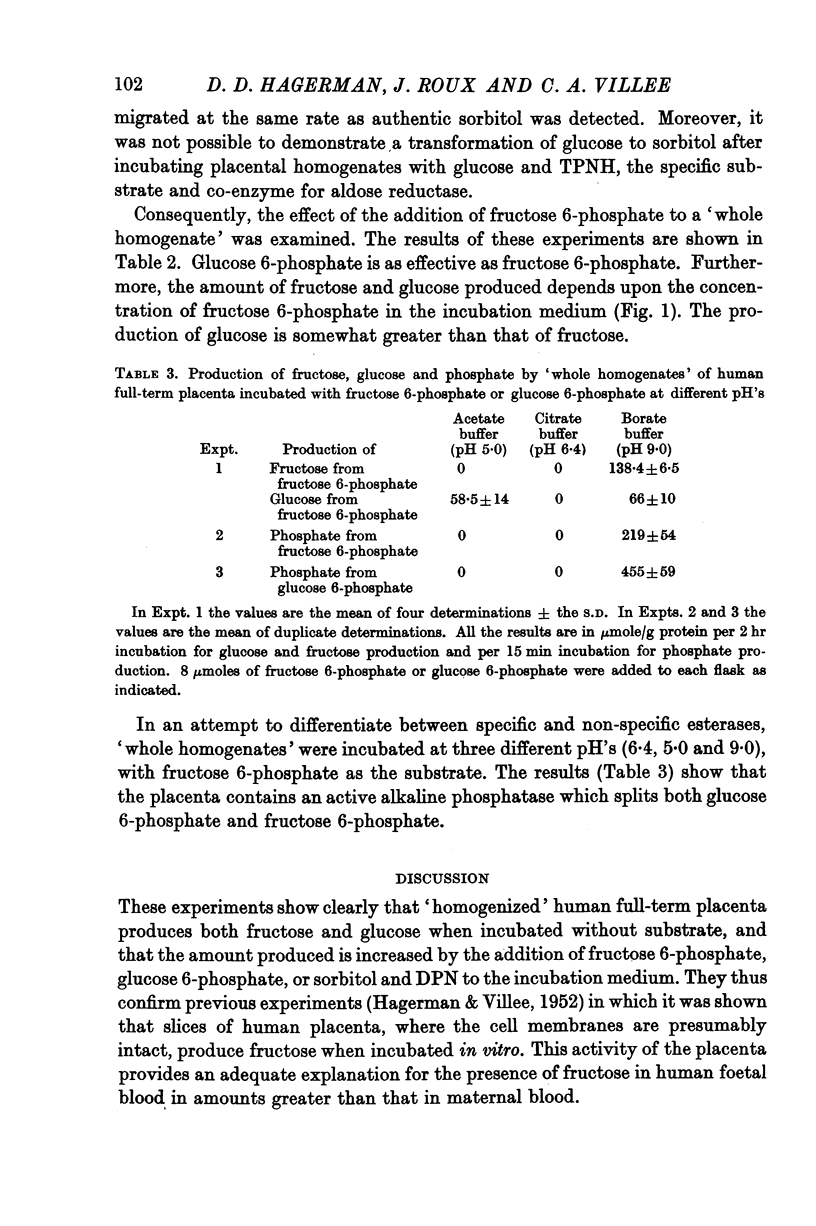Full text
PDF






Selected References
These references are in PubMed. This may not be the complete list of references from this article.
- BLAKLEY R. L. The metabolism and antiketogenic effects of sorbitol; sorbitol dehydrogenase. Biochem J. 1951 Aug;49(3):257–271. doi: 10.1042/bj0490257. [DOI] [PMC free article] [PubMed] [Google Scholar]
- Bacon J. S., Bell D. J. Fructose and glucose in the blood of the foetal sheep. Biochem J. 1948;42(3):397–405. doi: 10.1042/bj0420397. [DOI] [PMC free article] [PubMed] [Google Scholar]
- CHINARD F. P., DANESINO V., HARTMANN W. L., HUGGETT A. S., PAUL W., REYNOLDS S. R. The transmission of hexoses across the placenta in the human and the rhesus monkey (Macaca mulatta). J Physiol. 1956 May 28;132(2):289–303. doi: 10.1113/jphysiol.1956.sp005525. [DOI] [PMC free article] [PubMed] [Google Scholar]
- GLOCK G. E., MCLEAN P. Levels of oxidized and reduced diphosphopyridine nucleotide and triphosphopyridine nucleotide in animal tissues. Biochem J. 1955 Nov;61(3):388–390. doi: 10.1042/bj0610388. [DOI] [PMC free article] [PubMed] [Google Scholar]
- GOODWIN R. F. Division of the common mammals into two groups according to the concentration of fructose in the blood of the foetus. J Physiol. 1956 Apr 27;132(1):146–156. doi: 10.1113/jphysiol.1956.sp005509. [DOI] [PMC free article] [PubMed] [Google Scholar]
- HAGERMAN D. D., VILLEE C. A. The transport of fructose by human placenta. J Clin Invest. 1952 Oct;31(10):911–913. doi: 10.1172/JCI102679. [DOI] [PMC free article] [PubMed] [Google Scholar]
- HOLMBERG N. G., KAPLAN B., KARVONEN M. J., LIND J., MALM M. Permeability of human placenta to glucose, fructose, and xylose. Acta Physiol Scand. 1956 May 31;36(4):291–299. doi: 10.1111/j.1748-1716.1956.tb01326.x. [DOI] [PubMed] [Google Scholar]
- HUGGETT A. S. G., WARREN F. L., WARREN N. V. The origin of the blood fructose of the foetal sheep. J Physiol. 1951 Apr;113(2-3):258–275. doi: 10.1113/jphysiol.1951.sp004570. [DOI] [PMC free article] [PubMed] [Google Scholar]
- McKAY D. G., HERTIG A. T., ADAMS E. C., RICHARDSON M. V. Histochemical observations on the human placenta. Obstet Gynecol. 1958 Jul;12(1):1–36. doi: 10.1097/00006250-195807000-00001. [DOI] [PubMed] [Google Scholar]
- Orr A. P. Laevulose in the Blood of the Human Foetus. Biochem J. 1924;18(1):171–172. doi: 10.1042/bj0180171. [DOI] [PMC free article] [PubMed] [Google Scholar]
- SHAW D. R. Polyol dehydrogenases. 3. Galactitol dehydrogenase and D-iditol dehydrogenase. Biochem J. 1956 Nov;64(3):394–405. doi: 10.1042/bj0640394. [DOI] [PMC free article] [PubMed] [Google Scholar]
- VILLEE C. A. The metabolism of human placenta in vitro. J Biol Chem. 1953 Nov;205(1):113–123. [PubMed] [Google Scholar]
- Visit of delegation from La Société de Chimie Biologique on the occasion of the Discussion Meeting on ;The chemical basis of cell structure and function', 10 November 1945. Biochem J. 1946;40(1):1–2. doi: 10.1042/bj0400001. [DOI] [PMC free article] [PubMed] [Google Scholar]


